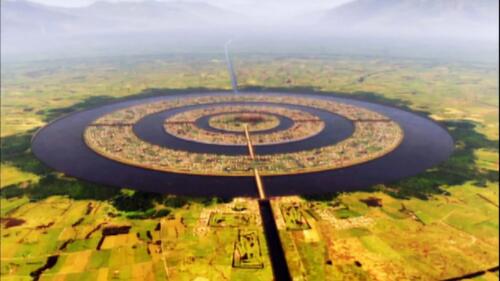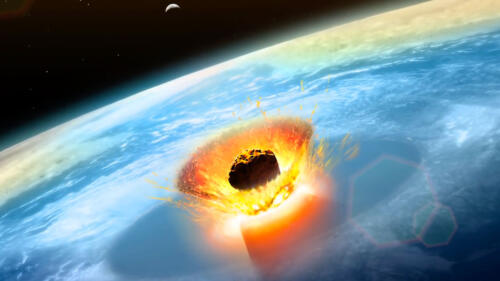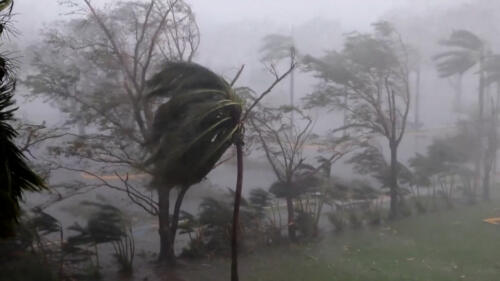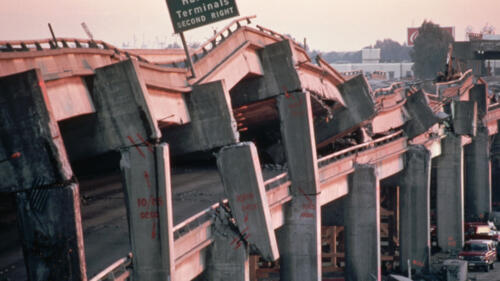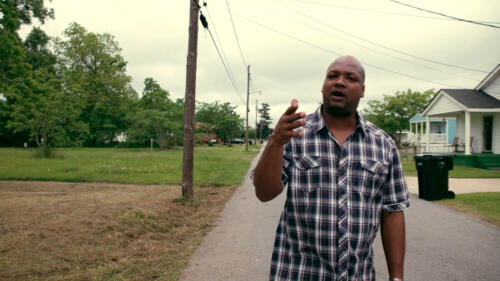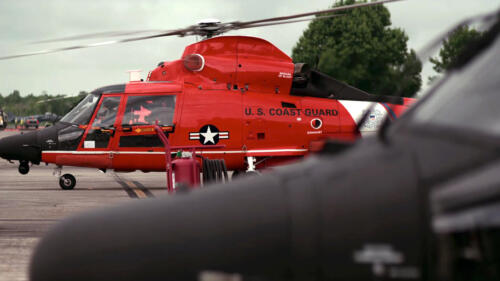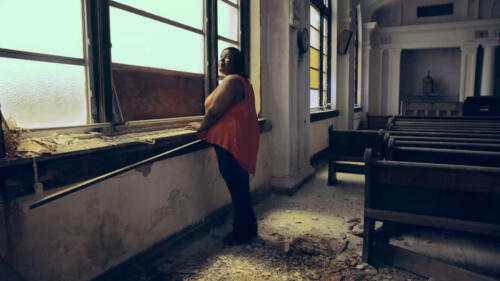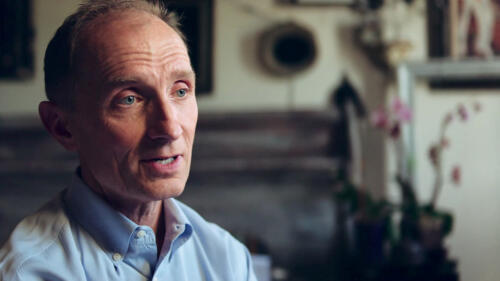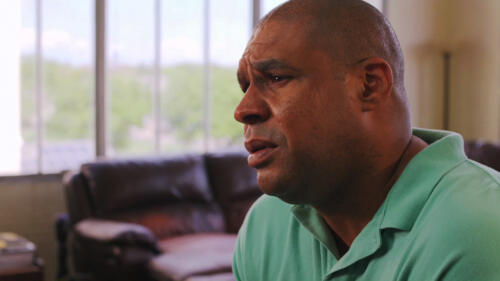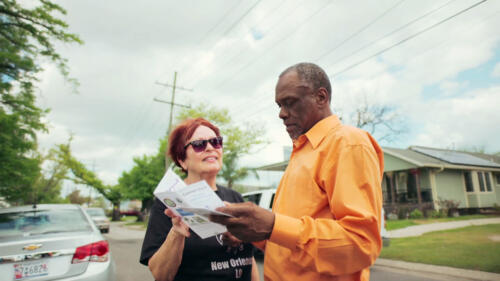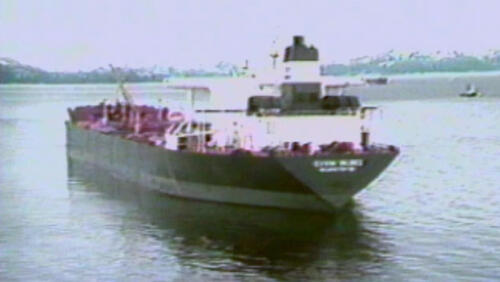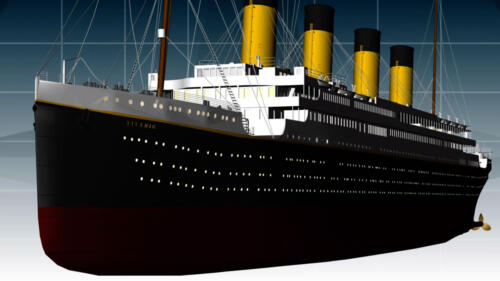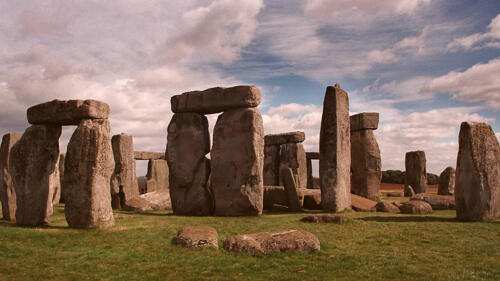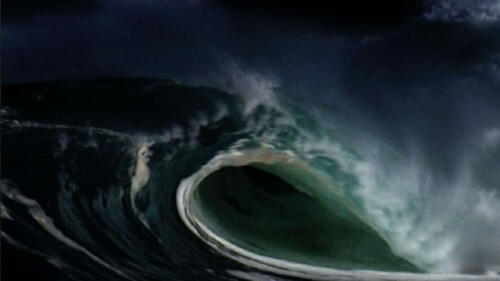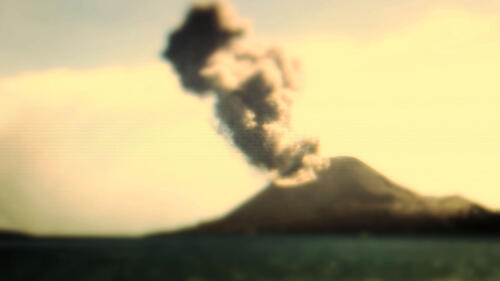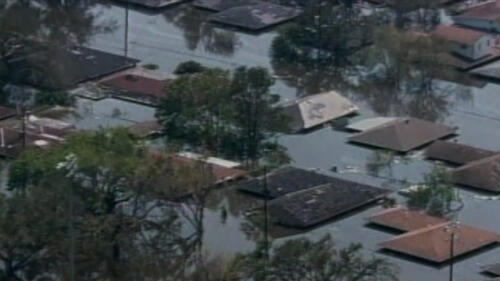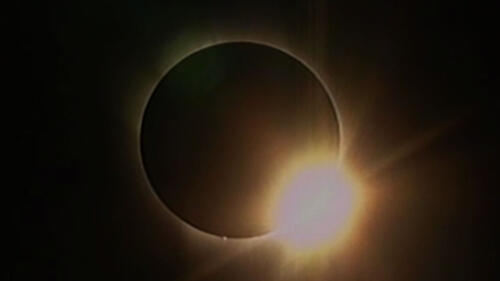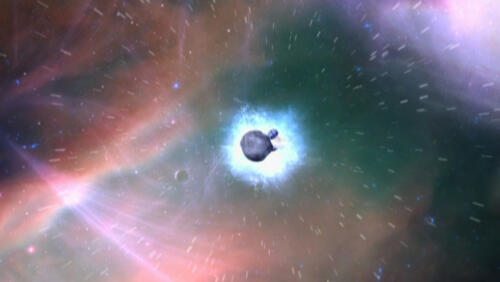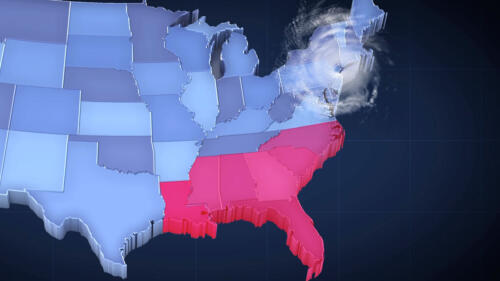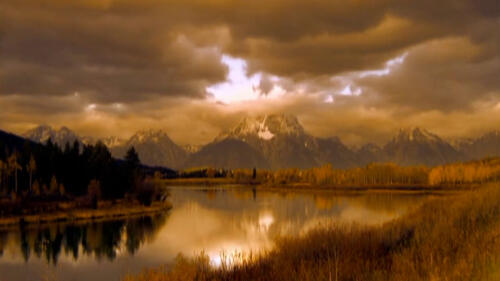Natural Disasters & Environment
Natural disasters and changes in the environment—from the Krakatoa eruption to climate change—have profoundly shaped human history. Explore both the sudden and long-term impacts of natural and human-made disasters and phenomena.

Start Here

Carson's 1962 bestseller first warned the public about the devastating effects of chemical pesticides—and started a revolution.

These violent storms have had far-reaching consequences that altered the course of history in surprising ways.

The 2005 hurricane and subsequent levee failures led to death and destruction—and dealt a lasting blow to leadership and the Gulf region.

Railway tracks buckled, people slept in parks, hundreds died, while others tried to die as the heat and humidity became unbearable.
How a Camping Trip Created our National Parks
How a Camping Trip Created our National Parks
When John Muir and Teddy Roosevelt spent three nights in Yosemite, it would soon pave the way for a National Park Service.
3 Fires That Changed History
Explore All Related Topics

Two years before Alfred Hitchcock’s ‘The Birds’ debuted, frenzied seabirds swarmed a California beach town frequented by the director.

When the Mississippi River broke through a manmade embankment, it triggered a 48-day flood that changed the way New Orleans managed its levees.

A plane crash...self-amputation...438 days at sea.

The colonists weren't the only ones to settle the New World.

Hear about the harrowing days of Hurricane Katrina from people who were there—helicopter rescue workers, Superdome survivors and unlikely heroes.

'When it rains in August, it rains honey and wine.'

It's far less known—but equally as perilous—for ships and planes.

Feeling the heat? See if you're living in one of the historically steamiest states in the country.

The scourge of mariners from antiquity to the modern era, wood-boring shipworms were purportedly more feared than pirates.

These invertebrates quietly transformed the continent in ways explorers could not have anticipated.

A disastrous 1879 Arctic expedition finally confirmed there was no open ocean at the top of the world—although warming waters could eventually make it possible.

The 1980 Mount St. Helens eruption wrecked landscapes and human life, but left lessons in its wake.

Eyewitnesses of the 1857 Fort Tejon earthquake described fissures tearing open in the earth, rivers changing course, trees being swallowed up by liquefaction and solid ground rolling like waves in the ocean.

From summoning rain to bombing the sky, these efforts showcase one of humanity’s oldest obsessions.

About 74,000 years ago, the Toba supervolcano blew its top in what's considered the largest natural disaster in the past 2.5 million years. Here's how humans managed to adapt—and survive.

From ad-hoc 'bucket brigades' to steam-powered fire trucks, firefighting has seen steady advances, while climate change-fueled fires present new challenges.

When a historic fire roared over more than 3 million acres in Montana, Idaho and Washington, the US Forest Service called for suppressing all fires.

From ancient Egypt and Maya to the Dust Bowl, take a look back at some of history’s most devastating droughts.

Active volcanoes abound in Hawaii, Alaska and the western United States, including several that have erupted in recent times.

These celestial events, whether solar or lunar, inspired fear, aided armies and helped confirm groundbreaking theories.

The disasters had a wide range of causes, from marching soldiers to a crowd gathered to witness baptisms.

These wildfires wrought extreme devastation as they roared through neighborhoods and lands in the U.S.

Carson's 1962 bestseller first warned the public about the devastating effects of chemical pesticides—and started a revolution.

Check out some moments that drove the national conversation around climate change.

Although not the deadliest, these flight disasters are among the most unforgettable in American history.

A captain and his crew needlessly endangered the lives of those on board.

Meteors, comets and asteroids have slammed into the Earth with a force many times greater than the most powerful nuclear bombs. Sometimes, mass extinction followed.

Hungry bears—whether grizzly, black, brown or polar—can be shockingly brutal.

An earthquake, a tsunami...and then a devastating power plant failure.

From pandemics to wars to natural disasters, these events took the highest tolls on American lives.

Massive fires have wrought devastation—but they've also led to significant reform and rebuilding.

These violent storms have had far-reaching consequences that altered the course of history in surprising ways.

The Great Plague and the Great Fire of London were two unimaginable disasters with no silver lining.

Feral swine. Rodents of unusual size. And a python that swallowed three deer.

They've eaten practically every mammal in sight—and have no natural predators.

Category 5 hurricanes pack the strongest winds but only a handful have been recorded making landfall in the United States.

These people went off the beaten track. Then things went horribly wrong.

The Keeling Curve was among the earliest charts showing that carbon dioxide levels in Earth's atmosphere were on a steady uptick.

The Tri-State Tornado claimed nearly 700 lives.

The 1886 blizzard imperiled settlers and left fields of dead cattle in its wake.

The “Great Arctic Outbreak” of February 1899 set temperature and snowfall records from Michigan to Florida.

When a steel tank full of molasses ruptured in 1919, physics and neglect contributed to making the accident so horrific, leading to 21 deaths.

The tsunami was the deadliest in recorded history, taking 230,000 lives in a matter of hours.

The powerful hurricane slammed into the Gulf Coast in August 2005 and overwhelmed levees surrounding the vulnerable city of New Orleans.

Railway tracks buckled, people slept in parks, hundreds died, while others tried to die as the heat and humidity became unbearable.

For these lucky survivors, the cavalry did arrive.

One storm left an estimated 8,000 dead in its wake, while an epic flood carried human bodies some 350 miles away.

Centralia, Pennsylvania was once a bustling mining center, but a hidden, underground fire has turned it into a smoldering ghost town.

Krakatoa is a small volcanic island in Indonesia, located about 100 miles west of Jakarta. In August 1883, the eruption of the main island of Krakatoa (or Krakatau) killed more than 36,000 people, making it one of the most devastating volcanic eruptions in human history.

The Great Fire of 1835 destroyed nearly 700 buildings.

Ring of Fire Mount St. Helens and the Cascade Range are a small part of the Ring of Fire, a zone of intense volcanic and seismic activity that surrounds the Pacific Ocean, stretching from the west coast of South America, northward through Central and No...

The Earthquake Strikes At 5:36 p.m. on March 27, 1964—Good Friday—the earth trembled just as many Alaskans were sitting down to dinner. Eyewitnesses described hearing a crunching, grinding noise as the earth shook. They recalled seeing asphalt roads ris...

It killed 100,000 people in the direct impact. But it led to tens of millions more deaths later.

Experiments linking human activity to rising temperatures surfaced in the 1800s, but it would be another century until climate change became a serious concern.

The winter solstice is the day of the year with the fewest hours of daylight. Humans may have celebrated the winter solstice as far back as the Stone Age.

The city learned from its past as it looked to the future.

The fall equinox is the first day of autumn in the Northern Hemisphere. Arriving between September 21 and 24, the day has spawned rituals in many cultures.

The Saffir-Simpson hurricane scale was originally created to help people decide how they should respond to storms.

The U.S. Weather Bureau got the forecast completely wrong.

The summer solstice falls between June 20 and 22 in the Northern Hemisphere. The longest day of the year, it has inspired celebrations for millennia.

Solar and lunar eclipses—astronomical events that occur when the Earth, the sun and the moon are aligned—have figured prominently in human history. Striking

Millions of children pack their bags each year and head to camps ranging from the rustic to the super-luxurious. But it was not always so.

Personal vendettas played out in the names of hurricanes.

From time immemorial, floods have wreaked havoc and made their mark on history.

Located on the shores of Lake Rotomahana, the Pink and White Terraces were formed over many hundreds of years from silica deposits left by the flowing waters of two hot springs. Beginning in the 1830s, these natural wonders—known respectively as Te Otukapuarangi (Maori for “fountain of the clouded sky”) and Te Tarata (“the tattooed rock”)—attracted thousands […]

During the vernal, or spring equinox, the amount of daylight and darkness is nearly the same in length. In the Northern Hemisphere, it signals the start of spring.

We trudge back in time to revisit some of the worst blizzards in U.S. history.

Explore some of the key developments in our love-hate history with the wonderful (awful) white stuff, snow.

Sugary-sweet molasses turned deadly on January 15, 1919, when a holding tank burst and sent 2.3 million gallons of the sticky liquid sweeping through the streets of Boston.

Explore what happened during the 1966 disaster when the Arno River burst its banks in the city of Florence.

Between September 2 and September 6, 1666, a massive inferno ripped through London, reducing much of the city center to a smoldering ruin.

After a mysterious illness killed dozens of American Legion members, public health officials launched the largest medical investigation in history to find out why.

It wasn’t safe to go back in the water of the Jersey Shore in 1916, as a series of deadly shark attacks forever changed Americans’ attitudes toward the sea creatures.

These 10 trees played a part in shaping world events.

Look back at the deadliest earthquake ever to strike the United States.

From the Dust Bowl to the BP oil spill, explore some of the most notorious environmental disasters of the last century.

On the 50th anniversary of the Great Northeast Blackout, look back at the night the lights went out on 30 million people in one of the largest power outages in U.S. history.

October 8, 1871 is best known as the start date of the Great Chicago Fire, which leveled three square miles of property and claimed 300 lives. Yet the very same night the Windy City went up in flames, an even bigger and more devastating blaze tore through tiny Peshtigo, Wisconsin, a frontier boomtown located a […]

Explore the story of the most destructive Atlantic storm in recorded history, which killed more than 22,000.

In the summer of 1816, the Northern Hemisphere was plagued by a weather disruption of seemingly biblical proportions. Following a relatively ordinary early spring, temperatures in the eastern United States plunged back below freezing, and communities from New England to Virginia experienced heavy snowfalls and crop-killing frost during June, July and August. Europe also found […]

The phrase has nothing to do with panting pooches.

From a climate-changing volcanic eruption to a mysterious explosion in Siberia, learn the stories behind six weird weather events that made their mark on history.

On October 17, 1814, a brewery accident unleashed a deadly tidal wave of beer through a London neighborhood in one of history’s strangest disasters.

Look back at the 9.2-magnitude earthquake, the largest ever recorded in North America, which shook Alaska 50 years ago.

The monstrous Hurricane of 1938 killed hundreds as it tore through the Northeast—and no one knew it was coming.

Find out how members of the animal kingdom have helped shape history for mankind, from paving the way for human space flight to bringing down Bin Laden.

Get the story behind Death Valley’s record-breaking heat wave.

From London's 'Great Stink' of 1858, to a sweltering stint during the Great Depression, take a look back at some of the deadliest heat waves in history.

The Great Flood of 1913 was one of the worst in U.S. history.

For five days in December 1952, the Great Smog of London smothered the city, wreaking havoc and killing thousands.

In 1859 a massive solar flare spewed electrified gas and subatomic particles toward Earth, wreaking havoc on telegraph networks.

Why do we bestow people’s names on volatile storms in the first place?

Lethal air, contaminated land, cancer epidemics—and coverups. These nuclear accidents were catastrophic.

The concept of green living may be new, but humans have been reducing, reusing and recycling throughout history.

On October 17, 1989, a magnitude 6.9 earthquake hit the San Francisco Bay Area, killing 67 people and causing more than $5 billion in damages.

Northridge Earthquake: January 17, 1994 Damage was widespread, as buildings, shopping centers, parking lots and portions of major freeways all collapsed. At least 57 people perished, while thousands more were injured. At the Northridge Meadows apartment...

In October 1780, a powerful storm slammed the islands of the Caribbean, killing more than 20,000 people. Known as the Great Hurricane of 1780, it is among the deadliest storms ever recorded. Specifics about the hurricane, such as its exact point of orig...

1991 Bangladesh Cyclone: April 29, 1991 Cyclone is the name given to hurricane-type storms that arise in the Indian Ocean, while typhoons are those that start in the Pacific Ocean and hurricanes are those found in the Atlantic. Cyclone 2B, as April 1991...

On September 21, 1999, an earthquake in Taiwan killed more than 2,400 people, destroyed or damaged thousands of buildings and left an estimated 100,000 people homeless. It was the worst earthquake to hit Taiwan–where quakes are common due to its locatio...

San Francisco Earthquake: April 18, 1906 The earthquake occurred at 5:13 a.m. local time, with its epicenter offshore of San Francisco, which then had a population of approximately 400,000 people. The greatest devastation resulted from the fires that qu...

Hurricane Mitch struck Central America in late October 1998, leaving more than 11,000 people dead, destroying hundreds of thousands of homes and causing more than $5 billion in damages.

Mexico City Earthquake: September 19, 1985 More than 10,000 people died as a result of the quake, some 30,000 others were injured and an estimated 250,000 people were left homeless. More than 400 buildings collapsed and thousands more were damaged. (The...

Hurricane Katrina was a destructive Category 5 storm that made landfall on the U.S. Gulf Coast in August 2005. The storm triggered catastrophic flooding, particularly in the city of New Orleans, and caused more than 1,800 deaths.

On October 8, 2005, a magnitude 7.6 earthquake shook the Kashmir region (a disputed territory controlled in part by Pakistan and India), along with sections of Pakistan, India and Afghanistan. More than 80,000 people perished as a result of the quake, w...

On September 8, 1900, a Category 4 hurricane ripped through Galveston, Texas, killing an estimated 6,000 to 8,000 people. The hurricane remains the worst weather-related disaster in U.S. history in terms of loss of life.

The Industrial Revolution In the latter part of the 13th century, in an effort to reduce air pollution, England’s King Edward I threatened Londoners with harsh penalties if they didn’t stop burning sea-coal. However, the king’s regulations–and those of ...





